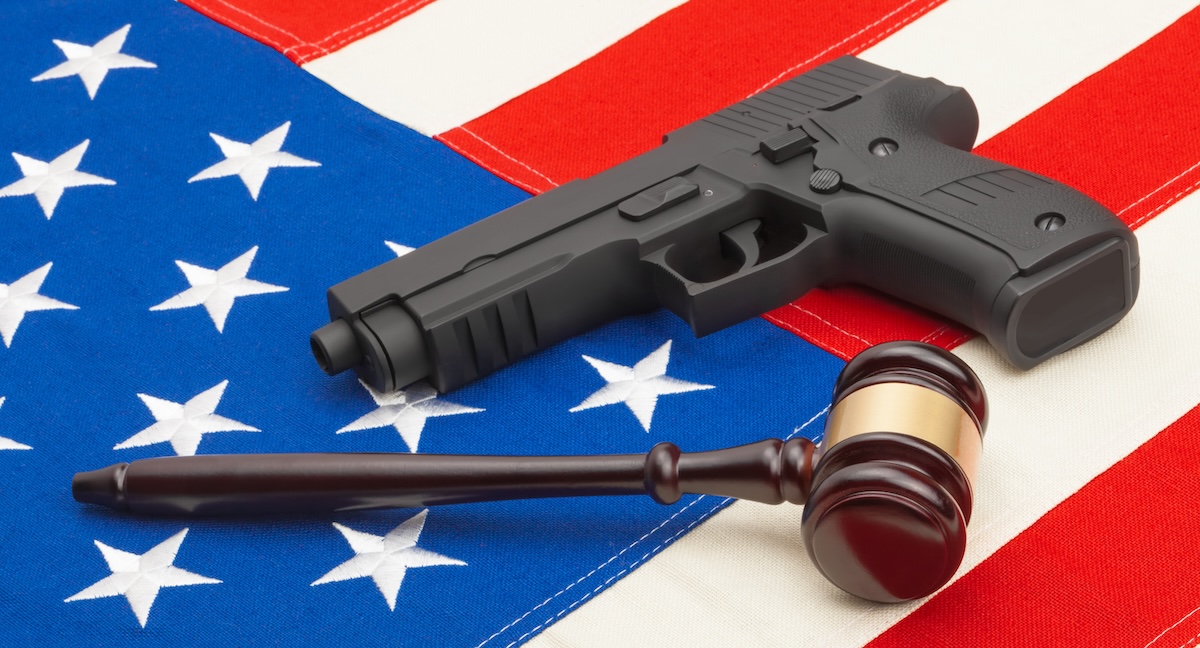People who know ‘compromised’ gun owner more supportive of red flag laws, survey finds

LAWRENCE — In America, a red flag represents an all-purpose warning sign. But more and more, the term is used when specifically discussing gun violence.

While people might assume support for red flag gun laws is divided among party lines, newly published research shows that’s not the case.
“Gun owners can recognize when there’s danger, and they’re willing to take steps to minimize that,” said Margaret Kelley, professor of American studies at the University of Kansas.
“When you know somebody who might be compromised, it changes the way you think about these laws. Red flag laws empower law enforcement to seek warrants to seize firearms from dangerous individuals. But the process often begins with a 911 call from someone close to that individual and is worried about them.”
Kelley's paper titled “‘I know it when I see it’: Public opinion on removing guns from compromised owners” evaluates “red flag” laws, finding that adults who believe they know a “compromised” gun owner — for example, someone dangerous, mentally ill or suffering dementia — tend to be much more supportive of such laws regardless of political underpinnings. The research appears in the International Journal of Law, Crime and Justice.
“People wary of red flag laws are concerned about individual freedom and government intrusion, and that it conflicts with the Second Amendment’s absolute right to have guns,” said Kelley, who co-wrote the paper with Neal Axton of KU Libraries and Christopher Ellison and Pablo Gonzalez of the University of Texas at San Antonio.
“Even if you’re more conservative, Republican, from a rural area and all these other things we traditionally might expect would put you in opposition, it changes that relationship. You become more likely to support these laws.”
Their research utilizes data gathered from Kelley and Ellison’s Guns in American Life Survey (GALS) of 2018. This Qualtrics-run survey featuring input from more than 3,000 respondents explores numerous considerations that shape experiences and stances concerning firearms.
Of nearly 260 million adults in the U.S., around 30% own a gun, and 43% live in a household with one, yielding an estimate of 78-112 million individual gun owners. Between 5% and 7% of U.S. adults say they know gun owners with dementia and other problems that may make them a danger to themselves or others. Extrapolated to the U.S. population, this is a staggering number of Americans (13-18 million) who think they know a potentially compromised gun owner.
“We find that ‘dangerousness’ matters,” Kelley said.
However, the patterns of support differ when it comes to dangerousness versus cognitive decline or dementia. Even if someone expresses concern about dangerousness, they may not be as concerned about dementia. For many older individuals, owning a firearm is deeply tied to their sense of identity and security, making it a sensitive issue when cognitive decline is involved.
Red flag laws were first enacted by the state of Connecticut in 1999. This was prompted by a mass workplace shooting at the Connecticut Lottery headquarters that resulted in five deaths. Indiana followed in 2005 after an Indianapolis police officer was fatally shot by a mentally disturbed man.
“Other states got more serious about passing legislation after Columbine. Mass shootings are usually what prompt people to move forward with these laws,” she said.
Interestingly, the term red flag is itself considered problematic. The pushback comes from those who argue against the perception of “everyone with mental illness now warrants a red flag.” Research shows that most violence is committed by people who are legally considered sane.
“It also isn’t the actual legal term, which is ERPO (Extreme Risk Protection Order),” she said. “The more legal side of proponents prefers that. But I think red flag is something everyone can understand the meaning of, and it’s what people use out in public. If there’s better language, we should find it, but it’s one that people understand right now.”
Regardless of what it’s called, the purpose remains the same: Identify individuals who are at risk.
Kelley said, “Hopefully, we can use this as a tool to intervene. We already know so many of the more high-profile shooters had red flags in their background — just look at the recent presidential assassination attempts.”
Now in her ninth year at KU, Kelley’s previous articles include “Cognitive and Apathetic Racism in Patterns of Gun Ownership and Gun Control Attitudes,” “How Do Veterans View Gun Policies? Evidence from the Guns in American Life Survey” and “Who Might Buy a Gun? Results from the Guns in American Life Survey.” She is currently working on a larger book project specifically focusing on the average woman gun owner in middle America.
“This research is important because it speaks to individual responsibility among gun owners,” she said. “The majority of gun owners are not involved in violence and shooting at people. They have legitimate concerns about safety and freedom, and they are as likely to recognize a danger and want to make sure that other people are safe, too.”